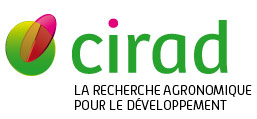Influence de la consanguinitÃĐ sur la sex-ratio et la diapause des populations de Diprion pini L. (Hym., Diprionidae). I. Observations sur une population d'ÃĐlevage. Relation avec le dÃĐterminisme du sexe et la consanguinitÃĐ
Beaudoin L., GÃĐri C., Allais J.P., Goussard F.. 1994. Journal of Applied Entomology, 118 (1-5) : p. 267-280.
Observations made on a rearing population of Diprion pini L. bred since more than 30 generations in photoperiodic and thermic conditions favourable to without-diapause development, show that during the first reared generations sex-ratio evolued rapidly in favour of males while diapause rate highly increased, reaching more than 90 % of individuals. Then diapause rates decreased gradually, after what, stay devinitively to a low level, while males remain much more numerous than females. These observations suggest a high consanguinity in rearing populations and that the increasing diapause rates, that are not without analogy with diapause variations during outbreaks of natural populations, may be linked with this consanguinity. Initial diapause rate recovery will result in the selection realised by the reproduction of the without diapause individuals only at every generation. The hypothesis is further advanced that the increase in males may result in a sex determinism well-known for some Hymenoptera and at least for a Diprionidae that involve the production of diploid males favoured by consanguinity. This phenomenon may be at the origin of observed diapause rate variations. Several factors such as insect weight, wing setae number and, in particular, the presence of heterozygote males in natural populations corroborate the existence of diploid males for D. pini. The existence of gynandromorphs in nature as in laboratory populations may also constitute an indicator of the consanguinity. Consanguine crossings realised between brother-sister insects through several generations reproduce the phenomena seen in rearing quite faithfully, as much for diapause as sex-ratio.
Mots-clÃĐs : diprion pini; diapause; sex ratio; inbreeding; structure de la population; polymorphisme enzymatique; lignÃĐe consanguine; france
Documents associÃĐs
Article (a-revue à facteur d'impact)
Agents Cirad, auteurs de cette publication :
- Ollivier Laurence — Persyst / UMR ABSys
